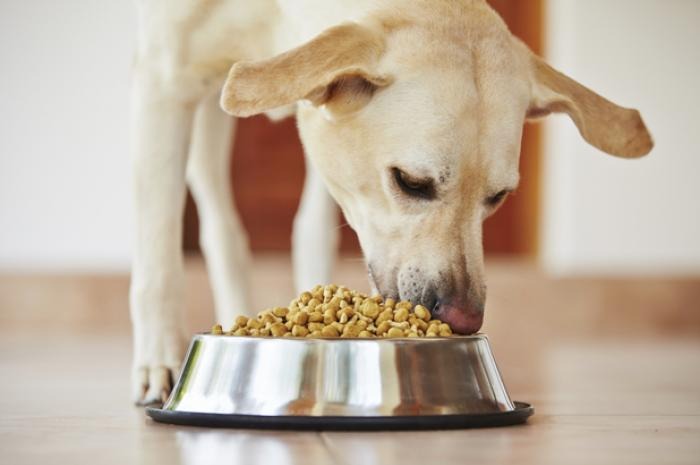You Won't Believe What's In Your Pet's Food
It was only a few years ago that the Food and Drug Administration was forced to tighten its lax regulatory standards after the largest pet food recall in history. Chinese producers had been adding melamine — a chemical found in a variety of plastics, laminates, and fertilizers — to boost the perceived protein content of wheat flour, which was then sold to pet food manufacturers around the world. Melamine has been linked to kidney failure and was responsible for the deaths of thousands of household pets over the years.
However, much of the language used by the FDA is still largely ambiguous. According to the Federal Food, Drug, and Cosmetic Act, all animal foods should be "safe to eat, produced under sanitary conditions, contain no harmful substances and be truthfully labeled." But ingredients such as "meat by-product" are not clearly defined, which has opened the doggie door to loose interpretations by the pet food industry. Fortunately, dedicated activists have managed to shed light on the industry, and as a result, a number of more transparent pet brands have emerged. That said, here are the top 10 grossest ingredients found in some pet foods.
"Animal Digest"
"Animal digest" is a heavily cooked down stew of unidentified animal parts. The animals used for this concoction can be obtained from any of the "Four Ds": dead, diseased, disabled, or dying prior to slaughter.
Blood Meal
Also known as dried blood or animal plasma, blood meal is thought by many pet food companies to add essential nutrients. Blood from cows is banned for fear of BSE (mad cow disease), but blood from pigs or horses it still acceptable.
Cancer-Causing Artificial Food Colorings
A major study suggested that Blue No. 2 caused brain tumors in male mice; the color additive is created by heating indigo paste with sulfuric acid. Yellow No. 6 was proven to cause tumors of the adrenal gland and kidney. The FDA allows it because it does not pose a significant cancer risk to humans.
Euthanized Animals
The thought of your pet as a cannibal is far from comforting; but besides the serious "ick" factor, the use of euthanized animals in pet food is dangerous. The phenobarbital used to euthanize animals remains in their system long after they're dead, which could cause widespread contamination among other meats at food-processing plants.
Hair and Feathers
There's nothing more off-putting than finding a hair in your food, but this is apparently something pets just have to deal with. Clean hair sterilized through high levels of heat and pressure is permitted in pet foods. Feathers are not digestible, but can still be included to boost the protein count in pet food.
Menadione Sodium Bisulfite
A synthetic version of vitamin K, MSDS is not advised to be consumed over long periods of time, but it's still permitted in pet food. It's carcinogenic and can be toxic to the kidney, lungs, and liver if continually ingested.
Propylene Glycol
Propylene glycol is the infamous "anti-freeze ingredient." Although it is GRAS (generally recognized as safe) in small doses by the FDA, its usage in pet food is more uncertain. Animals shouldn't be eating food containing propylene glycol for any extended period of time.
Spent Grains and Cereals
Dogs have trouble digesting many grains and cereals. Corn grain most often added to dog food, but it's also the worst for them because of its strong starch-protein ratio. Dogs didn't evolve to consume corn, and they don't have the gastrointestinal mechanisms to digest it.
